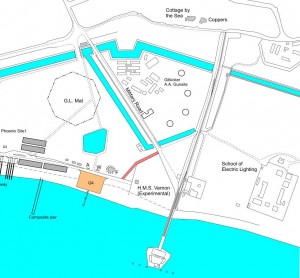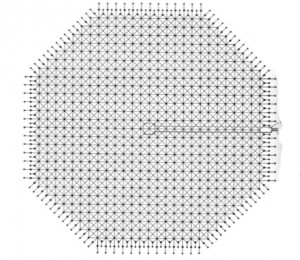Gilkicker Anti-Aircraft gun site, designated P3 (SZ603982), was one of three Anti-Aircraft gun sites built at Gosport as part of the Portsmouth Anti-Aircraft defences. It came under the command of 35th Anti-Aircraft Brigade Southern Area, Southern Command (Raised 1 April 1938 at Fareham) with its Headquarters at Fort Fareham, Hampshire.
The Anti-Aircraft guns at Gosport were manned by the 215th (Gosport and Fareham) Battery which was the Gosport Battery. In addition AA defences at Gosport were also manned by 48th (Hampshire) Anti-Aircraft Battalion, R.E. (T.A.) – South-Western Area, Southern Command 393rd Company based in Gosport.
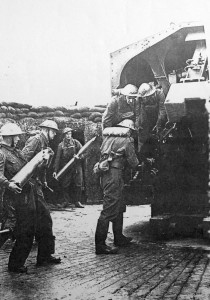 |
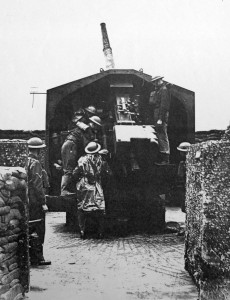 |
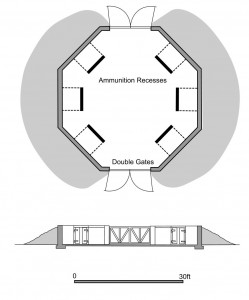
The other two Gosport AA Gunsites were P4 at Holbrook (SU592021 which post War became Holbrook Primary School, nothing of it survives) and P40 at Browndown SZ579995. The holdfasts for the Browndown site still exist, hidden beneath the bracken and bushes. The Stokes Bay Gilkicker AA site site was north of the modern Gosport and Fareham Inshore Rescue Station and south of Fort Road. Gilkicker AA Gun Site held four 4.5-inch static AA guns in 1942. The Gun Operations Room for Gosport AA defence was in Fort Monckton whilst the Master Gun Operations Room (Sector Control) for the entire Solent Sector was in Fort Fareham.
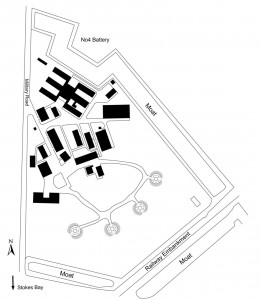
To the north of the four gun emplacements was a hutted camp used as accommodation, communications and administration for the Gilkicker Anti-Aircraft Battery.
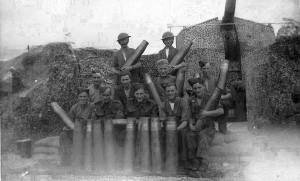 |
Photo kindly supplied by John Peters showing his father (sitting front centre next to the Sergeant) of the 214/57th HAA Regiment, C section. (214th (Southsea) Battery based in Southsea.
The 214s & 215s also manned sites at Sinah (Haling Island) and Southsea.
Close to Gilkicker AA site, north of the old paddling pond was an octagonal mat for a Ground Laying Radar shown on the 1943 D Day Hards construction plans. The mat consisted of a series of wires laid in a grid connected to a receiver. Erecting the mat took fifty men two weeks to complete. A nearby transmitter sent out a signal that was reflected off incoming aircraft. The mat picked up the bounced signal and this was used to give the nearby AA Gun Site enough information to fire at unseen incoming aircraft.
The Gilkicker gun site concrete emplacements were removed in 1976 and no surface features remain but some concrete can still be seen beneath the grass in dry weather.
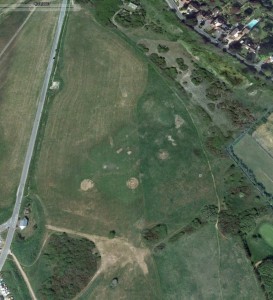 |
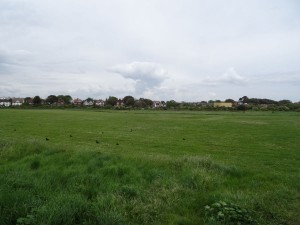 |
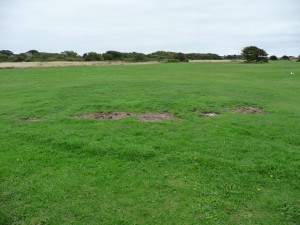 |
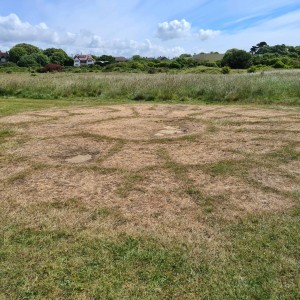 |
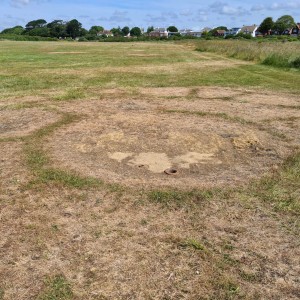 |
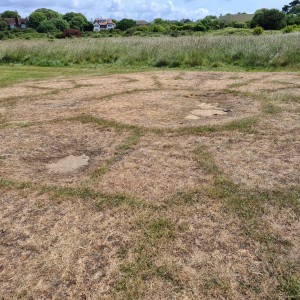 |
After World War Two the Gilkicker AA gunsite was decommissioned and the guns were removed. The hutments became a training centre for the Territorials as a weekend training facility, until they moved to Browndown Camp in 1959. According to someone who was stationed there in the Summer of 1960 as a REME mechanic, only the workshop remained. The site was then used as a vehicle park for the Territorial Army at Browndown and was designated as 121 Week End Training Camp.
Equipment trained on at the centre included the the M9 director which was designed for the new 90-mm gun and was to be used primarily with the SCR-545 and SCR-584 radars. It was a ballistic director capable of handling target speeds up to 600 mph. This director was also adapted for use with the 120-mm AA gun.
The SCR-584 (short for Set, Complete, Radio # 584) was an automatic-tracking microwave radar developed by the MIT Radiation Laboratory during World War II. It was one of the most advanced ground-based radars of its era, and became one of the primary gun laying radars used worldwide well into the 1950s. A trailer-mounted mobile version was the SCR-784. The gun-laying radar project, started in 1938, culminated in the SCR-584 which had a microwave radar used for both search and tracking. Automatic tracking in azimuth and elevation was a feature of this set. This was the best and most advanced fire control radar to be produced during the war by any of the powers.
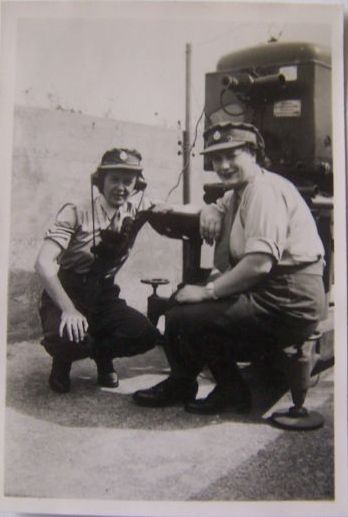
An M9 Director at Gilkicker Weekend Training Centre 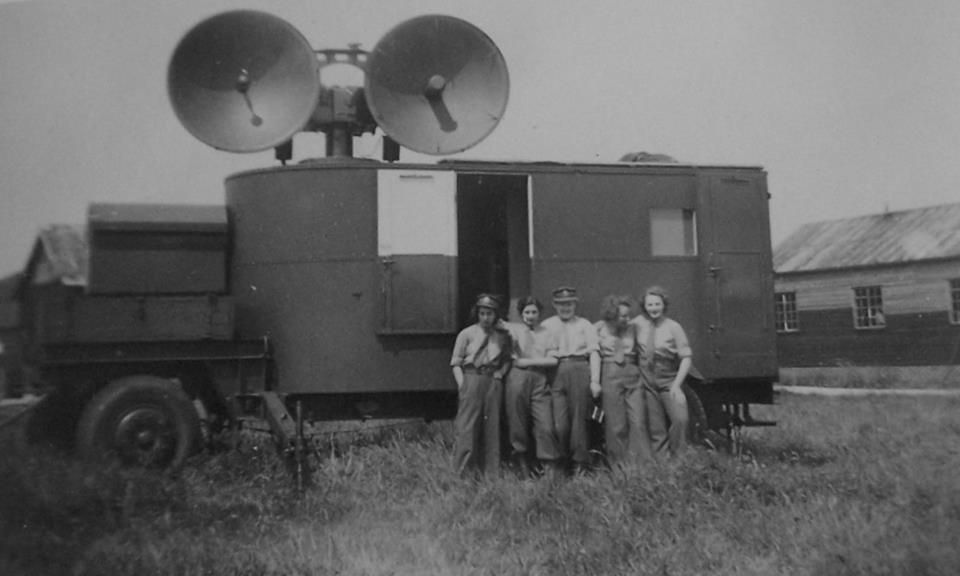
An SCR-784 automatic-tracking microwave radar at Gilkicker
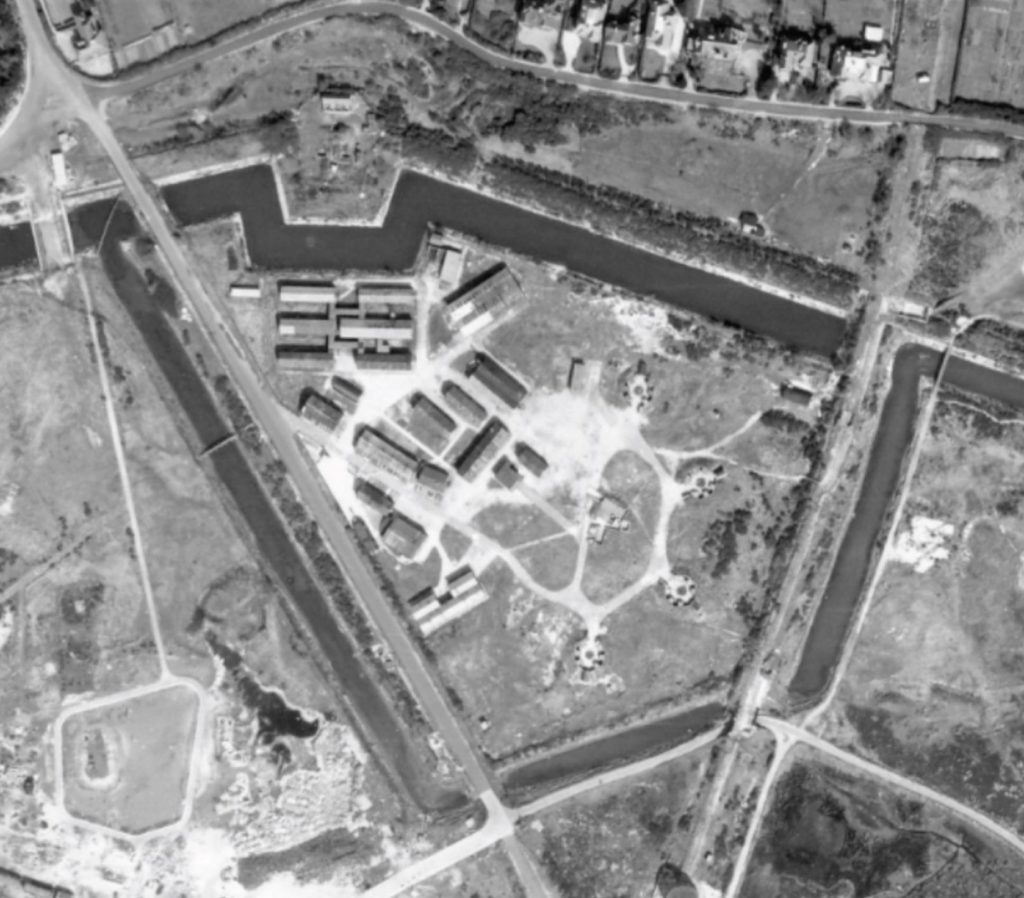
The council minutes for January 1976 record that Gilkicker landscaping phase I had begun including the demolition of the reinforced concrete buildings and gun bases, the break down and infill a very large military cesspit (whose existence was unknown!) and the removing of dangerous obstructions from the shore; planting 500 gorse and some blackberry bushes: A cost of £10,500.
For more details on the Gilkicker AA Gun Site visit:
http://www.fortgilkicker.co.uk/AAgunsite.htm
For more details on the Gilkicker GL Radar installation visit:
http://www.fortgilkicker.co.uk/radar.htm
and for details of the M9 and SCR584 visit:
http://www.globalsecurity.org/military/library/policy/army/accp/ad0699/lesson1.htm
